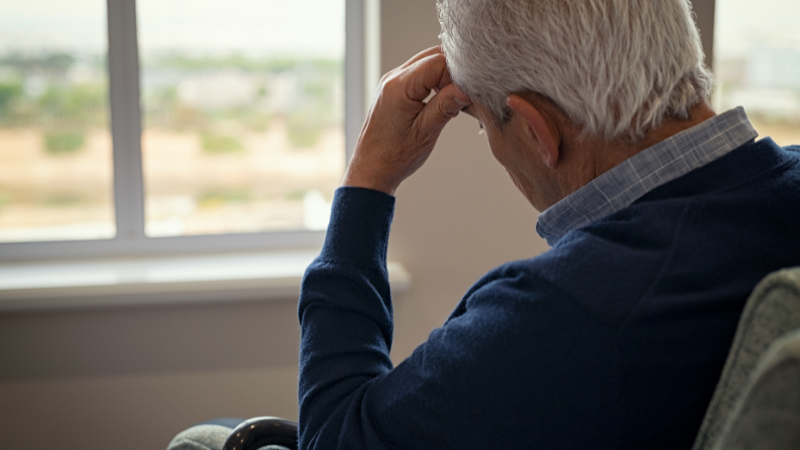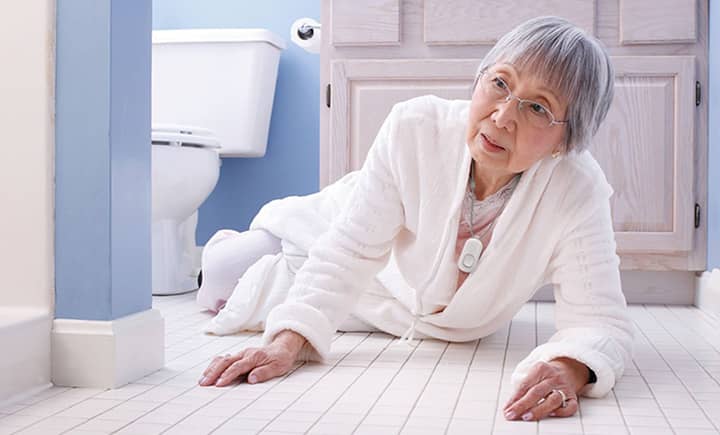In a world where technology continuously evolves, the safety and well-being of our elderly loved ones have become a top priority. As family caregivers, it is crucial to understand the benefits of fall detection over cameras to ensure the safety of our elderly family members. While cameras might seem like a viable solution, fall detection systems offer numerous advantages that enhance privacy and provide more accurate monitoring.
The benefits of fall detection over cameras extend beyond just safety. These systems prioritize the dignity and privacy of elderly individuals, a factor that is sometimes compromised with camera surveillance. This article will delve into why fall detection systems are a more effective choice for elderly care.

What is Fall Detection?
Fall detection refers to the use of technology that can automatically detect when a person has fallen and send alerts to caregivers or emergency services. This technology is especially crucial for elderly individuals who live alone and may not be able to call for help in the event of a fall.
How Fall Detection Technology Works
Fall detection systems typically use a combination of sensors and algorithms to monitor a person’s movements. These sensors can be worn as wearable devices or installed in a home. When a fall is detected, the system sends an alert to designated contacts or emergency services.
Types of Fall Detection Devices
There are various types of fall detection devices available, including wearable devices, in-home sensors, and smart home systems. Each type offers unique features and benefits to cater to different needs.
Advantages of Fall Detection Systems
Privacy and Dignity
One of the main benefits of fall detection over cameras is the preservation of privacy. Unlike cameras, fall detection systems do not involve constant video surveillance, allowing elderly individuals to maintain their dignity and personal space.
Accuracy and Reliability
Fall detection systems are specifically designed to detect falls accurately. They use advanced sensors and algorithms to differentiate between regular movements and actual falls, minimizing false alarms and ensuring timely assistance.
Immediate Response
These systems provide an immediate response in the event of a fall. Alerts are sent instantly to caregivers or emergency services, ensuring that help arrives as quickly as possible.
Why Cameras Might Not Be the Best Option
While cameras offer a way to monitor elderly individuals, they come with significant drawbacks. Continuous surveillance can infringe on privacy, and cameras might not always be positioned to capture every fall incident accurately.
Privacy Concerns
Cameras can be intrusive and may make elderly individuals feel uncomfortable in their own homes. This lack of privacy can lead to a sense of vulnerability and loss of independence.
Limitations in Coverage
Cameras have limited coverage and may not capture falls that occur outside their field of view. This limitation can result in missed incidents and delayed assistance.
How Fall Detection Enhances Elderly Care
By choosing fall detection systems over cameras, caregivers can ensure a safer and more respectful environment for their elderly loved ones. This choice enhances the overall quality of care and provides peace of mind for both the elderly and their families.
Supporting Independent Living
Fall detection systems support independent living by allowing elderly individuals to continue living in their homes safely. This technology provides the safety net needed for them to maintain their autonomy.
Reducing Hospital Readmissions
Timely detection of falls reduces the risk of severe injuries and subsequent hospitalizations, which can be costly and stressful for families. The immediate response facilitated by fall detection systems can prevent complications and improve recovery outcomes.
Choosing the Right Fall Detection System
When selecting a fall detection system, it is essential to consider various factors such as the individual’s lifestyle, the system’s features, and the level of support provided by the manufacturer.
Key Features to Consider
Look for systems that offer customizable settings, reliable alert mechanisms, and user-friendly interfaces. It’s also beneficial to choose systems with long battery life and durable designs.
Conclusion
The benefits of fall detection over cameras are clear. These systems provide a more respectful and effective way to ensure the safety of elderly individuals. By prioritizing privacy and offering accurate monitoring, fall detection technology is transforming elderly care for the better.
For more information on fall detection solutions and how they can improve elderly care, visit Motions Living.

FAQ
How does fall detection differ from traditional monitoring systems?
Fall detection systems use sensors and algorithms to detect falls, unlike traditional systems that may rely on manual alerts or constant camera surveillance.
Can fall detection systems be integrated with other smart home technologies?
Yes, many fall detection systems can be integrated with other smart home technologies to enhance overall safety and convenience.
Are fall detection devices suitable for all elderly individuals?
Fall detection devices are suitable for most elderly individuals, especially those at risk of falls or living alone. However, it’s essential to assess individual needs and preferences when choosing a system.
This article contains affiliate links. We may earn a commission at no extra cost to you.






